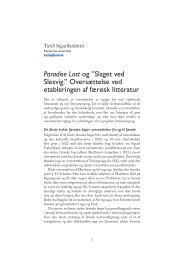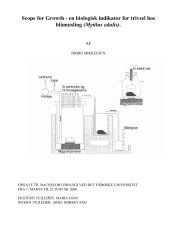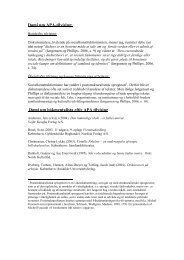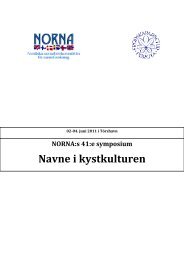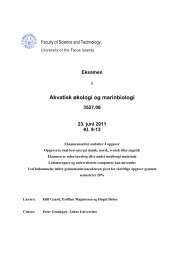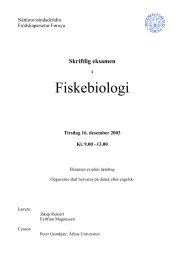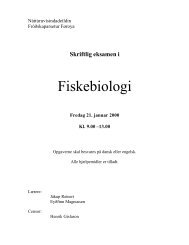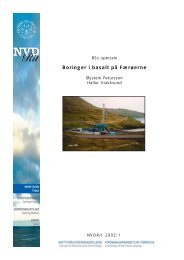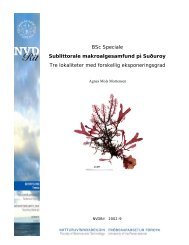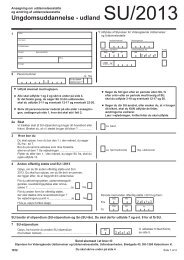Infectious Pancreatic Necrosis Virus (IPNV) - Fróðskaparsetur Føroya
Infectious Pancreatic Necrosis Virus (IPNV) - Fróðskaparsetur Føroya
Infectious Pancreatic Necrosis Virus (IPNV) - Fróðskaparsetur Føroya
You also want an ePaper? Increase the reach of your titles
YUMPU automatically turns print PDFs into web optimized ePapers that Google loves.
2.4 Occurrence and Tracking of Listeria monocytogenes in Production<br />
The subtyping of Listeria monocytogenes isolates offers an approach for investigating the<br />
relatedness of isolates and identifying and tracing the sources of epidemics. Subtyping has<br />
been successfully used in identifying and tracing epidemics of L. monocytogenes caused by<br />
food, and to determine which food caused the epidemic. If L. monocytogenes is found in<br />
finished products, all steps in production can be examined, from raw material and through<br />
processing environment to determine the origin of the contamination. Both phenotyping and<br />
molecular typing methods have been applied in the subtyping of L. monocytogenes isolates. L.<br />
monocytogenes contamination studies have been performed to identify contamination routes<br />
and sites in food processing plants and to gain information on how to prevent product<br />
contamination (Rørvik et al. 1995).<br />
Traditional typing methods like serotyping do not give sufficient information when it comes<br />
to epidemics of L. monocytogenes. Most listeriosis cases are associated with a restricted<br />
number of serotypes: 1/2a (15-25%); 1/2b (10-35%); 1/2c (0-4%); 3 (1-2%); 4b (37-64%) and<br />
4 not b (0-6%) (Farber & Peterkin 1991) but none of the present methods have consistently<br />
identified strains that are nonpathogenic or less virulent (FAO/WHO 2004). The numbers<br />
clearly show that serotypes 1/2a, 1/2b, and 4b have been associated most frequently with<br />
listeriosis in humans (Lund 2008).<br />
2.5 Persistency and Control of Listeria monocytogenes<br />
Listeria monocytogenes can be found in contaminated seawater and in seafood plants (Rørvik<br />
et al. 1995). The bacteria can form biofilm (Faber & Peterkin 1991). This can explain how<br />
many studies have shown persistent L. monocytogenes in the production environment for<br />
years (Vogel et al. 2001).<br />
Cleaning and disinfection is therefore a vital part of the control of L. monocytogenes in the<br />
food industries. Cleaning and disinfection are two complementary processes, whereas none of<br />
them can get a good result on its own (Wilhelm 2003). There are often problems with L.<br />
monocytogenes in equipment that is difficult to dismount when cleaning and disinfecting<br />
(Borlaug 2005). If the cleaning and disinfection are not efficient enough L. monocytogenes<br />
may establish biofilm. Biofilm is an aggregate of microorganisms that adhere to each other on<br />
a surface. These adherent cells are embedded within a self-produced matrix of extracellular<br />
16



